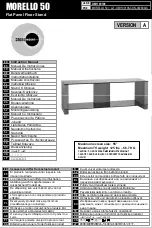
Page 58
Instructions for Operating
optoNCDT 22xx
Error Influences
8.2
Color differences
Because of intensity compensation, color difference of targets affect the measuring result only slightly. How-
ever, such color differences are often combined with different penetration depths of the laser light into the
material. Different penetration depths then result in apparent changes of the measuring spot size.
Therefore color differences in combination with changes of penetration depth may lead to measuring errors.
This fact also affects the linearity behaviour of the sensor, if it has been adapted for white, diffusely reflecting
reference material, and is then used to measure black material.
If, however, the sensor is optimized for the black material, a clearly improved linearity behaviour is achieved
again.
Temperature influences
When the sensor is commissioned a warm-up time of at least 20 minutes is required to achieve uniform tem-
perature distribution in the sensor.
If measurement is performed in the micron accuracy range, the effect of temperature fluctuations on the sen-
sor holder must be considered.
Due to the damping effect of the heat capacity of the sensor sudden temperature changes are only measured
with delay.
Mechanical vibration
If the sensor should be used for resolutions in the µm to sub-µm range, special care must be taken to ensure
stable and vibration-free mounting of sensor and target.
Surface roughness
In case of traversing measurements surface roughnesses of 5 µm and more lead to an apparent distance
change (also-called surface noise). However, they can be dampened by averaging, see Chap.
6.3
.















































